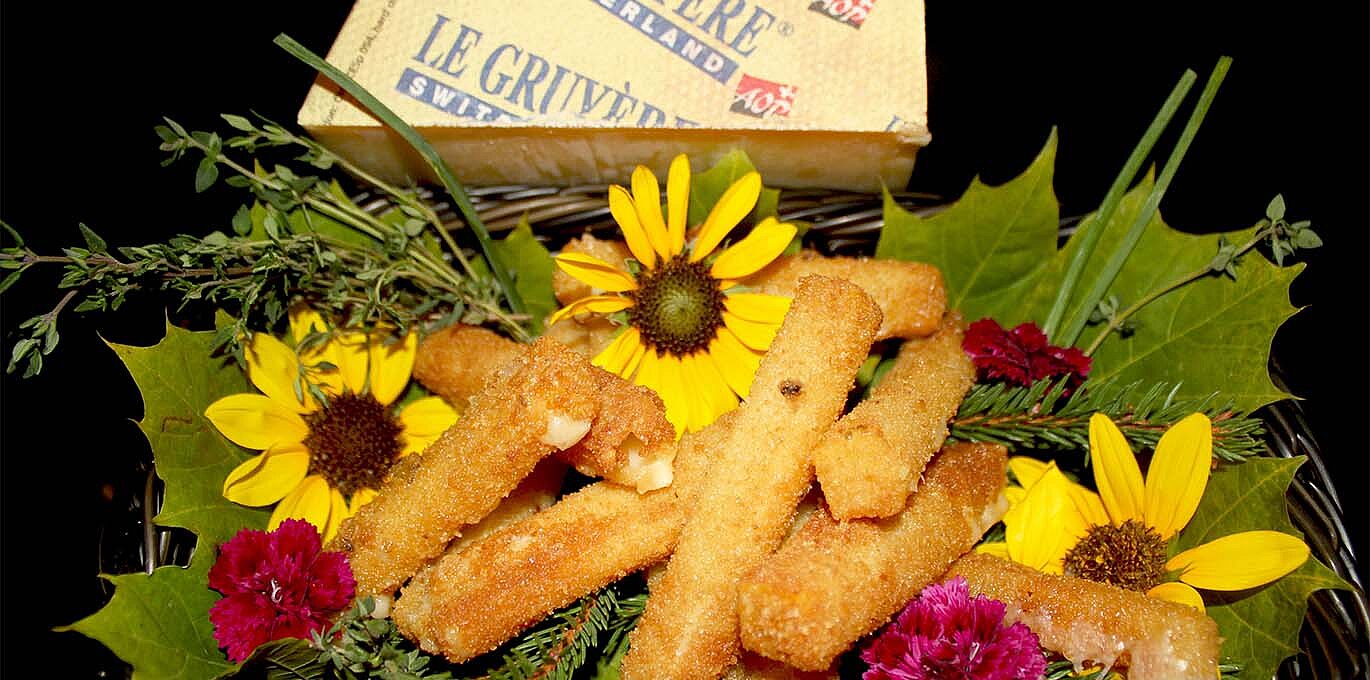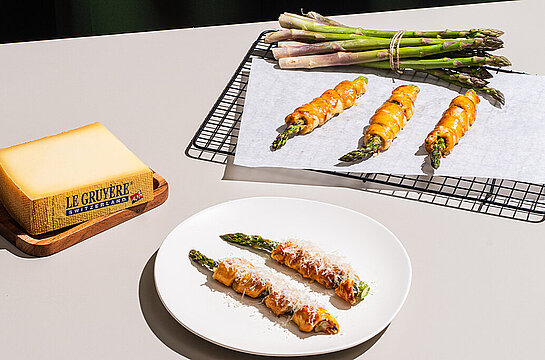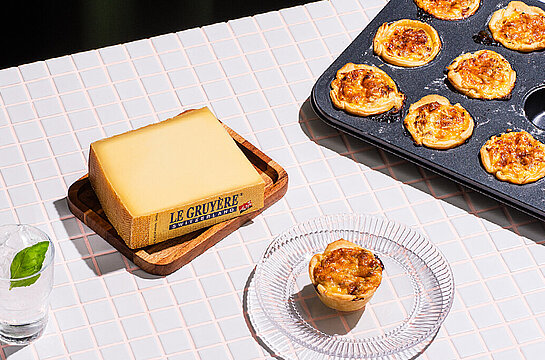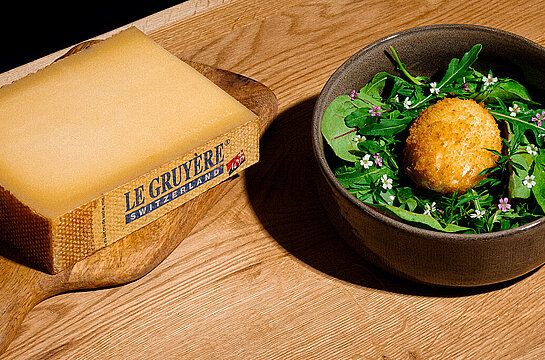Chips breaded with Gruyère AOP
20' 3'
Without a doubt, the Belgians and the French argue over the paternity of chips. In Belgium, they’re eaten alone, fingers in a sack bought in a ‘frikot’ (chips stall) at anytime of the day. In France, one prefers them with a fork as a side dish, during a meal.
For the Belgians, the salted potato stick was born in Namur, a French speaking city in Belgium, 63 km from Brussels. Its inhabitants were fishermen and regularly fried small fish. However, during a particularly severe winter, in the middle of the 17th century, the river froze over. Consequently, they were unable to enjoy the fried fish that they had become accustomed to. According to Pierre Leclerc, professor at the University of Liège, legend has it that the gourmands replaced the fish with potatoes in the form of fish that they fried. However, he points out that he finds this legend unlikely.
Plus tard, en 1838, le Bavarois Frédéric Krieger s'installa à Liège et ouvrit une maison de frites au marché. Les clients affluèrent. Les pommes de terre sont toujours découpées en rondelles, mais celles-ci sont plongées dans une bassine de beurre clarifié bouillant. Il faut encore attendre vingt et un ans pour que les frites se transforment en bâtonnets. Saviez-vous que pour avoir une bonne frite, comme les préparent nos amis Belges, il faut faire cuire 2 fois la frite. Une première fois dans de la graisse de cheval et une deuxième fois dans de la graisse de bœuf.
Later, in 1838, the Bavarian Frédéric Krieger came to Liège and opened a chips stall at the market. Customers came from all around. The potatoes were always cut in round slices, but they were plunged into boiling clarified butter. One must wait another twenty one years before the chips were transformed into the form of sticks. Did you know that in order to have a good chip, like those prepared by our friends the Belgians, you need to cook the chips twice: the first time in horse fat, and the second time in beef fat?
In France, the ‘braderie de Lille’, where traditionally mussels and chips are eaten, would like to claim that chips come from there. But according to historians, chips come from the capital. In fact, the ‘chips Pont-Neuf’ were apparently invented by street vendors on the oldest bridge of Paris after the 1789 revolution. In the recipe of French chef Madame Mérigot, the first mention of chips dates from 1794. She explained how prepare and cook potato ‘chips’ in lard or in butter.

Ingredients for
Note
Attention changement nombre de personnes
-
240 gGruyère AOP
-
1 egg
-
40 gflour
-
40 gbreadcrumbs
Preparation
- Cut the Gruyère AOP into sticks.
- Beat the egg in a bowl.
- Prepare 3 bowls: one with flour, one with the beaten egg and one with the breadcrumbs.
- Dip the sticks of Gruyère AOP in the flour, then the beaten egg, then the breadcrumbs. Do this two times to be sure to have a thick enough breading.
- Put the sticks of Gruyère AOP in the freezer for at least an hour. In fact, you can preserve the breaded, uncooked, Gruyère AOP chips in the freezer for up to 6 months and remove them little by little as needed.
- In a pot or a deep fryer, heat the frying oil to 180°C.
- Fry the frozen, breaded sticks of Gruyère AOP until golden brown. Attention: if you cook them too much, they risk breaking.







